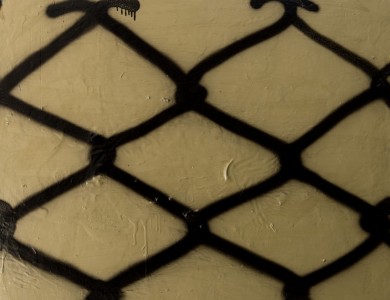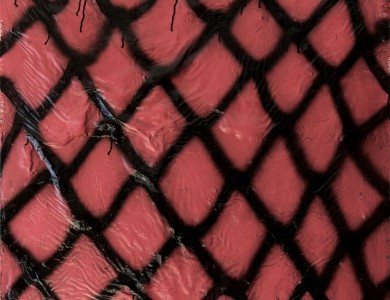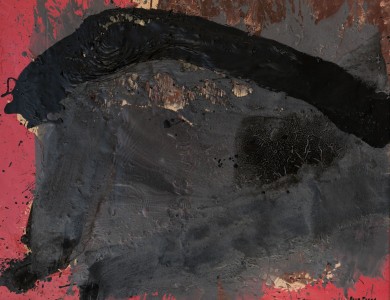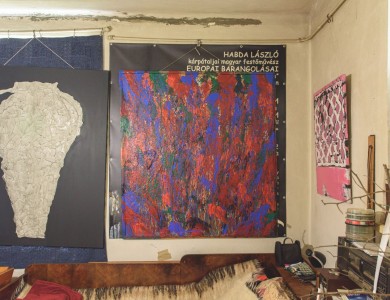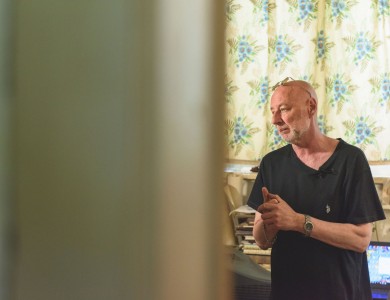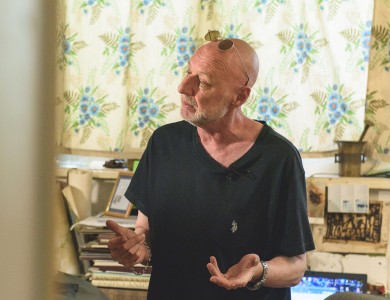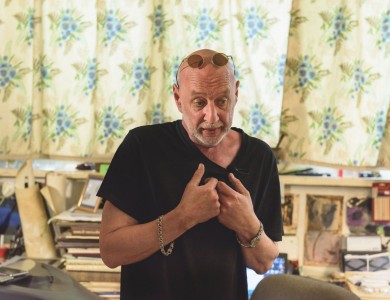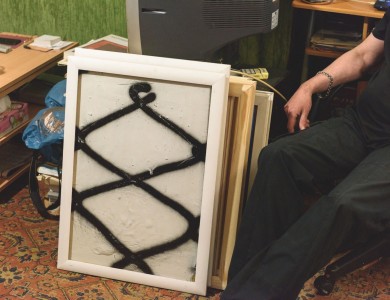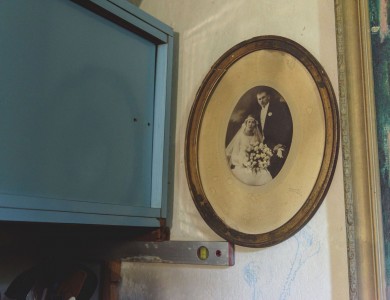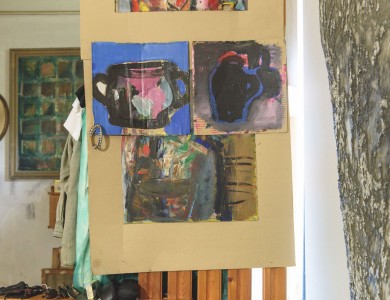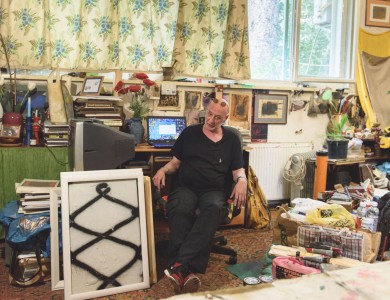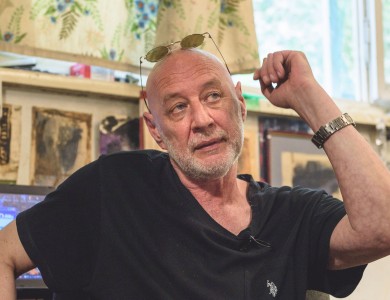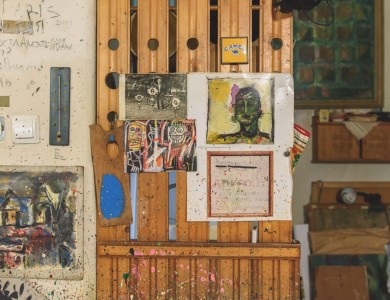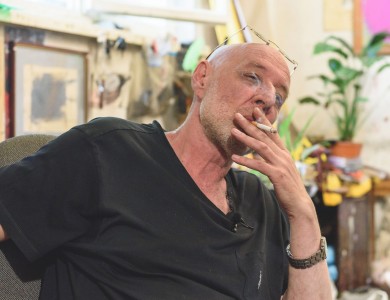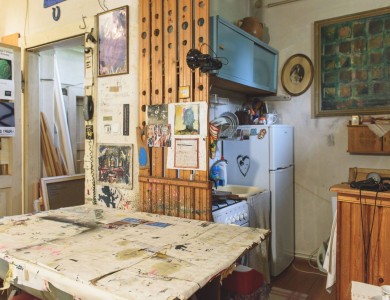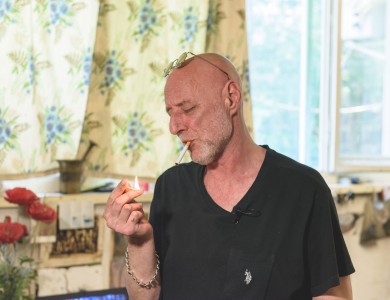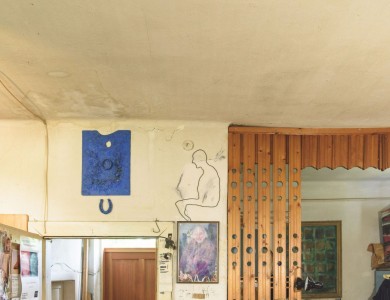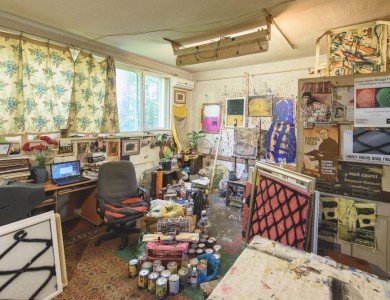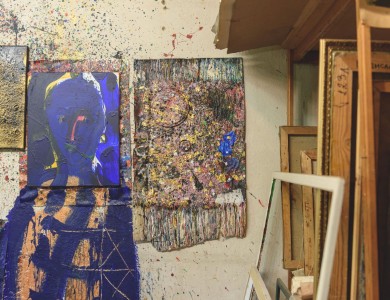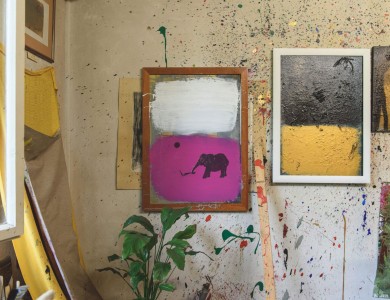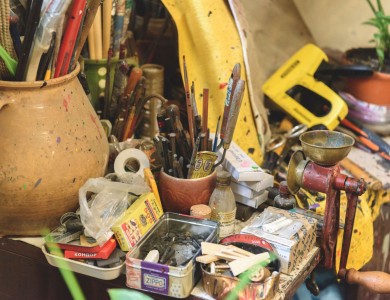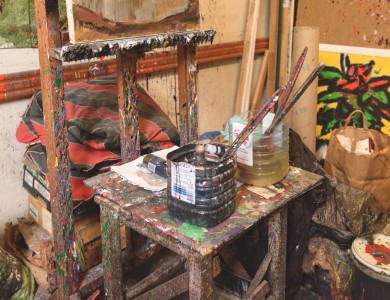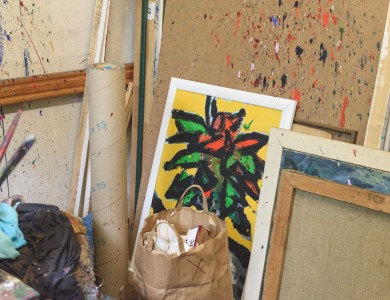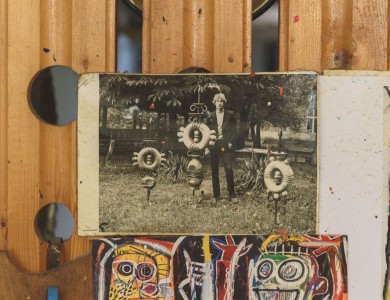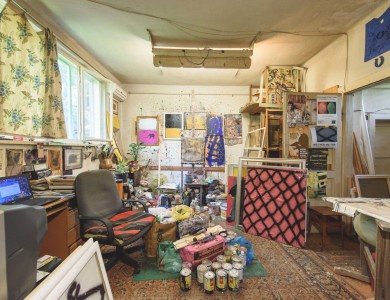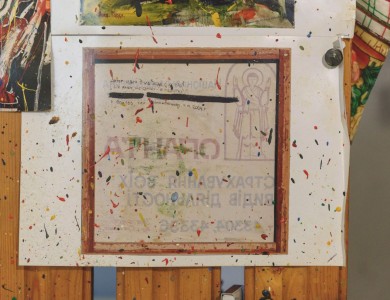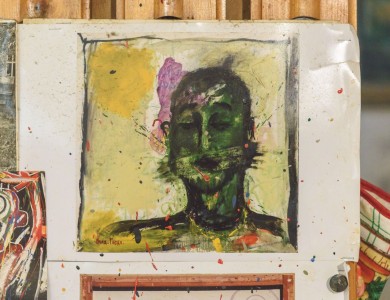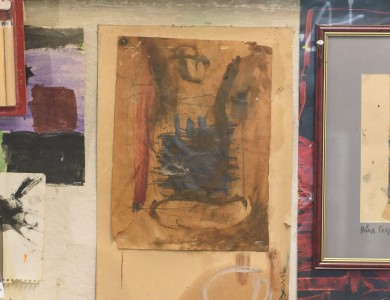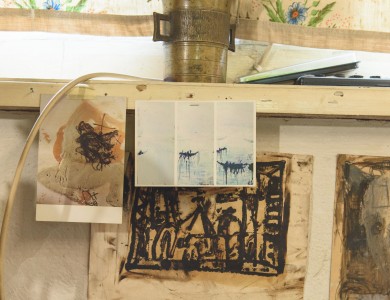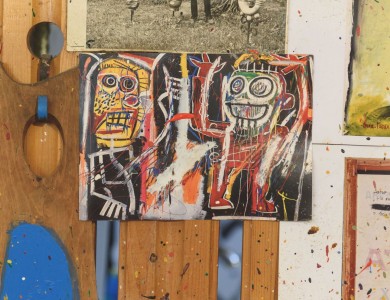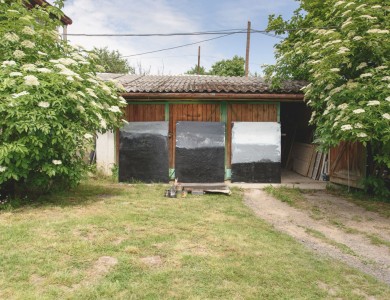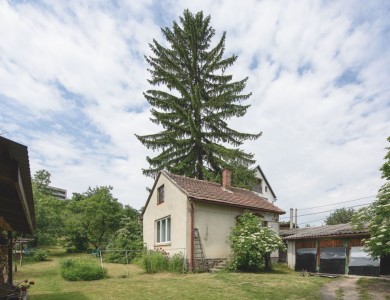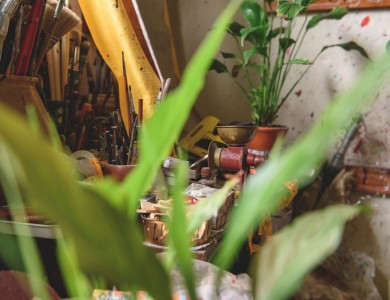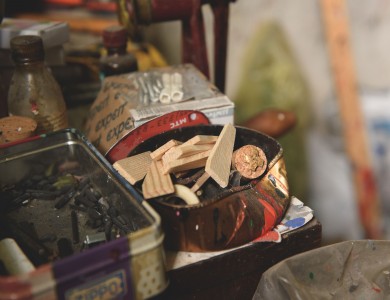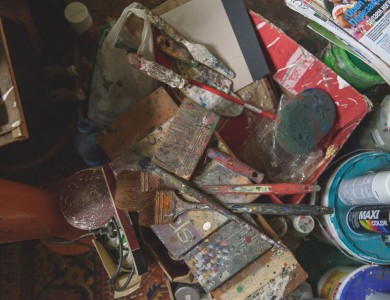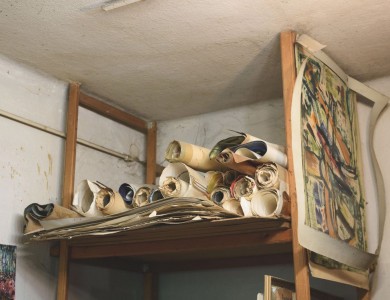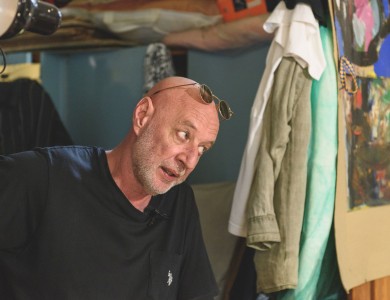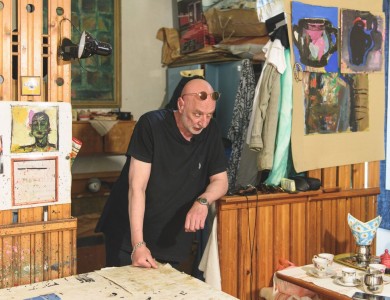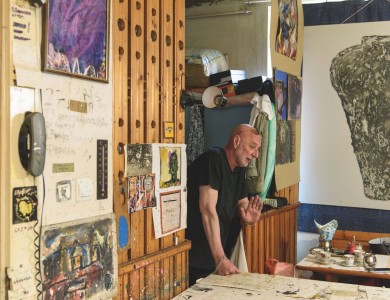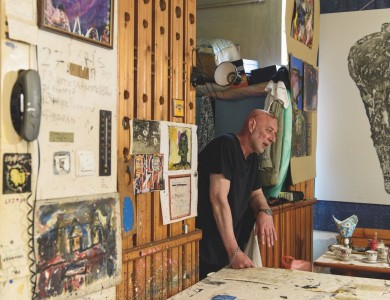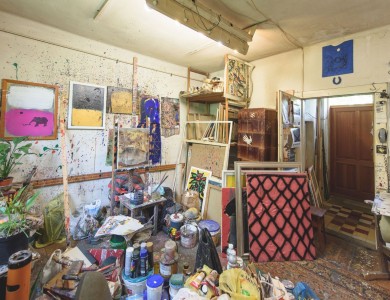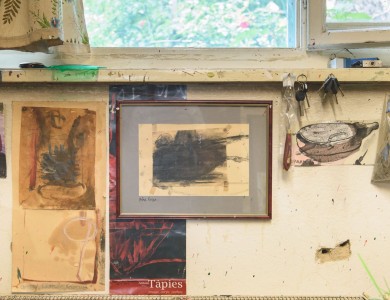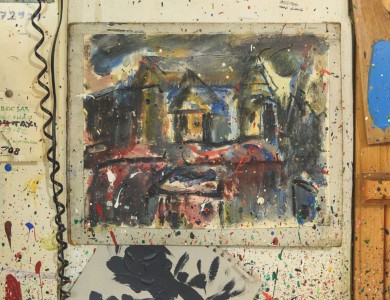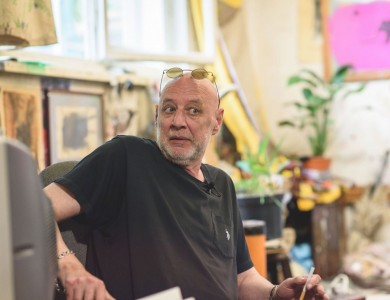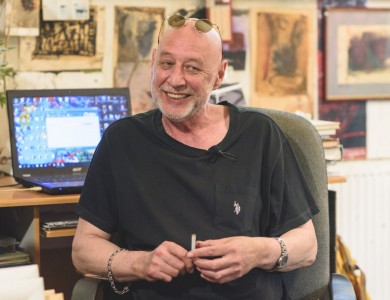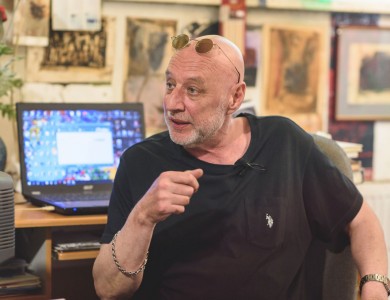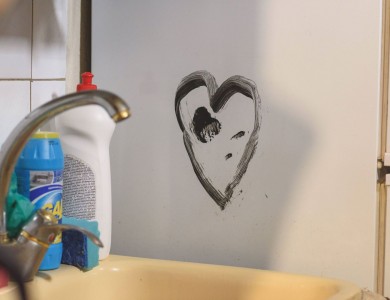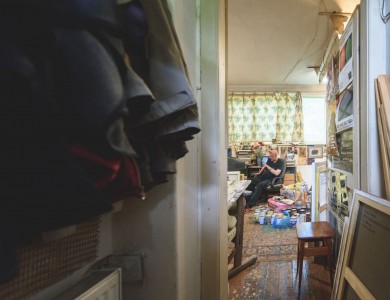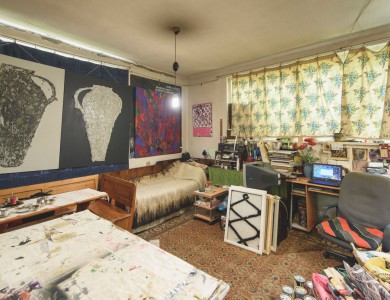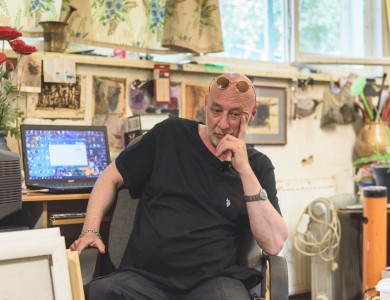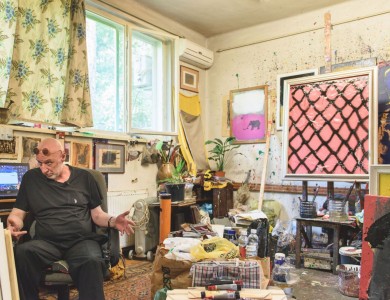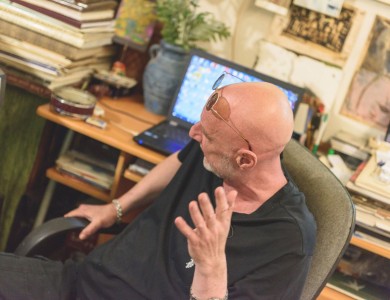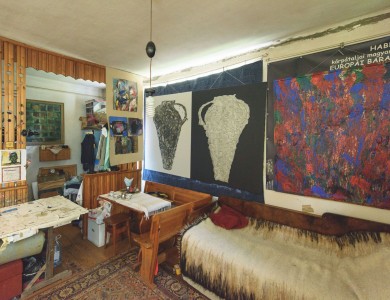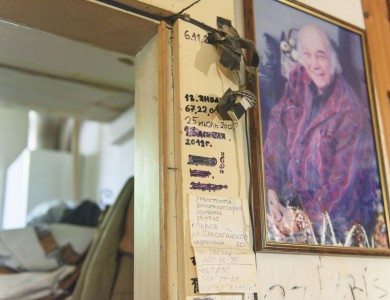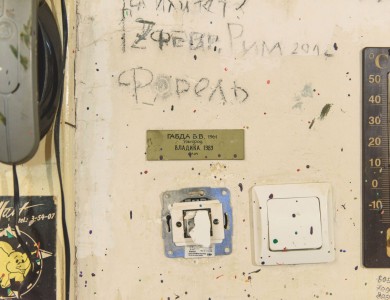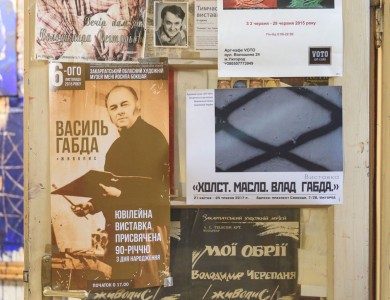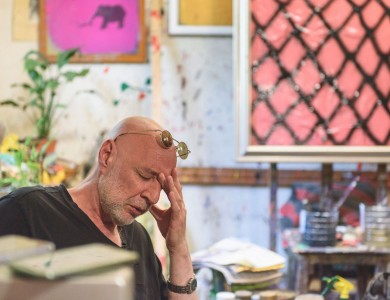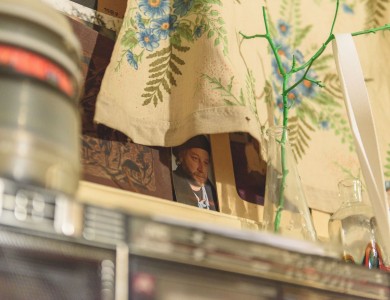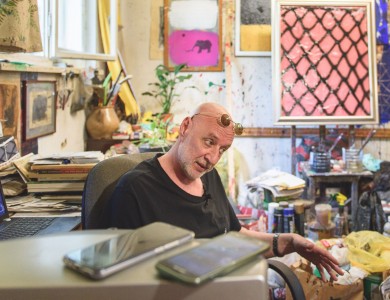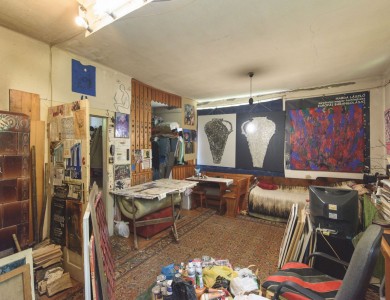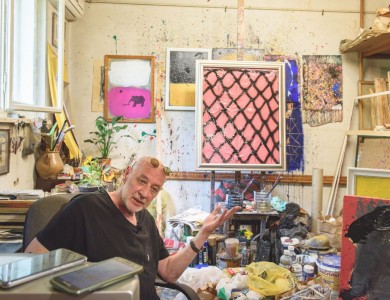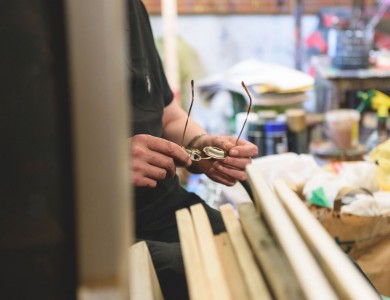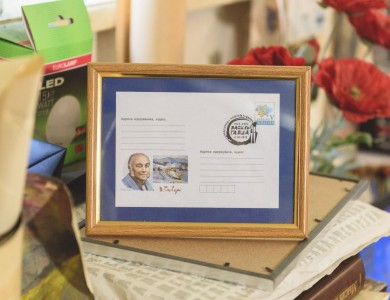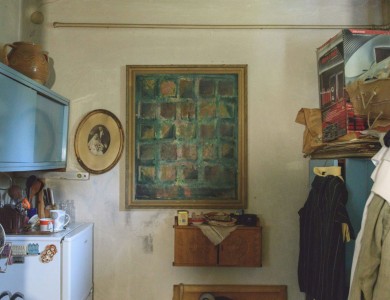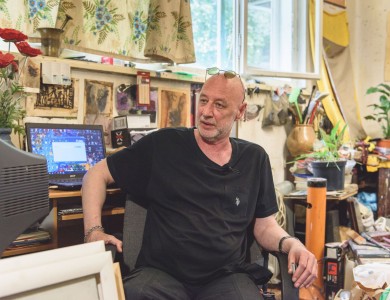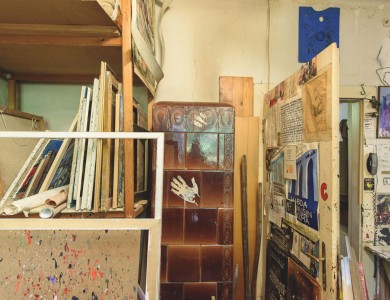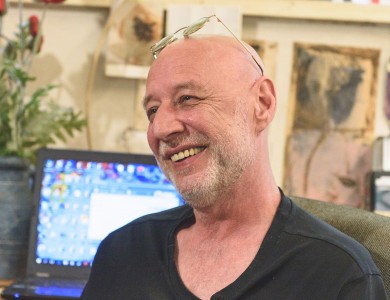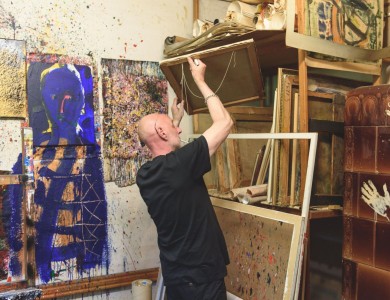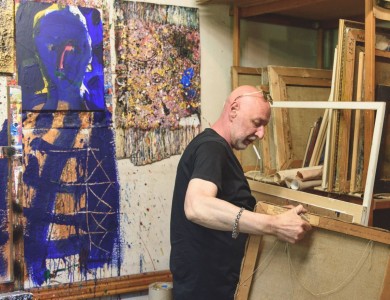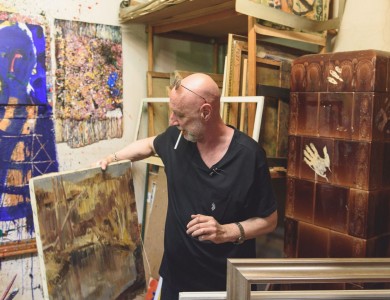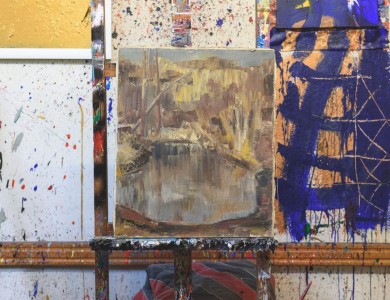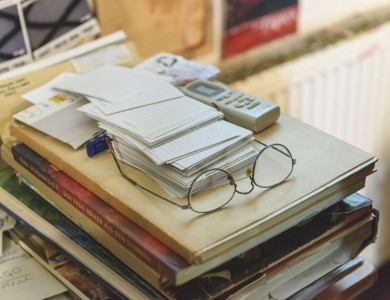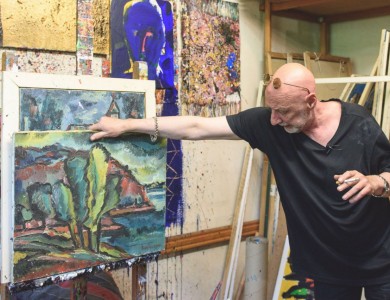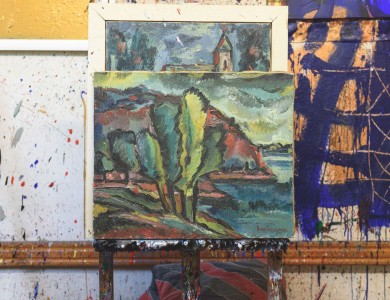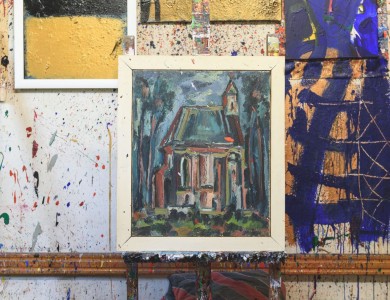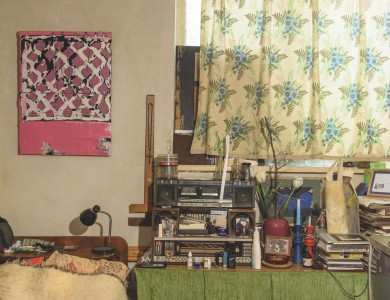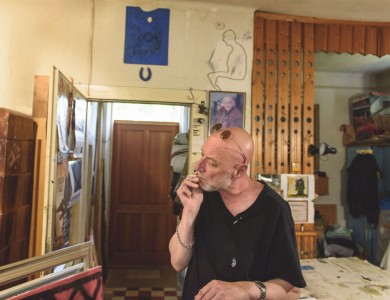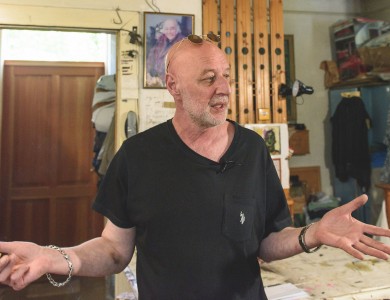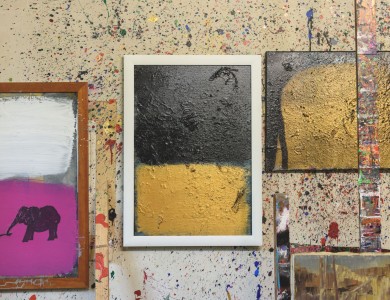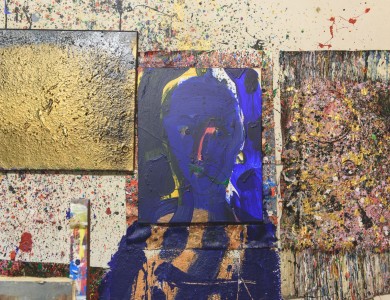
VLAD HABDA
2017
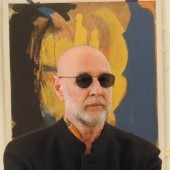
… The eternal rebel, a man for whom art is a constant search, testing of new motives and ways of conveying the idea.
This is Vladyslav Habda, an artist who, like numerous sons of coryphaei in art, was under a lot of pressure during his life: not only was it necessary for him to match the name of his father, the People's Artist of Ukraine Vasyl Habda, but also to find his own way, to prove that he does not just bear the famous name, he is the creator of a separate individual space.
The studio of Vlad Habda is the same as he and his creativity: rebellious and original. On the floor, at the first glance, there are paints in tubes and cans piled up randomly, next to them there are spray cans with which the artist liked to work recently.
In addition to paintings, the walls, the floor, the windowsills in the studio are full of a lot of things that matter to the owner. The entrance door to the studio is covered with posters of exhibitions - both father’s and his own. The wall at the entrance is covered with a photo that almost does not catch a sight, in it young Vlad stands next to the sculptures: “This is my thesis work - works of landscape gardening art,” - the author recollects. He is a young man there, and next to him, on a small piece of canvas, a self-portrait of the artist in a few decades. Surely, to recognize Vlad in it, we must look at it closely, because he is depicted in green colours, circled in black. “You see the mouth seems like sealed up. In fact, it was like this: he drew his portrait at night, being angry at himself he sealed up the mouth on the canvas with the toilet paper, then tore it off in the morning, and that effect left a bit of blurred, rubbed up bottom part of his face, as a kind of sign that one need to talk less.”
On the shelves in his studio there is a pile of books on art, albums, catalogues, the artist has a special attitude to those things: “I do not know what the first book was in my hands - Cézanne or Erdeli …. You know, I am very lucky to have such a father, in the Soviet times he had books on modern French and world art, and I started with it,” - Vlad recollects.
On one of the walls in the studio is the echo of the artist's expressive works where it is reflected the paints of the most diverse colours and shades - on its background the artist created a lot of his works. Here is an easel with the work from the artist's last exhibition – “Canvas. Oil. Vlad Habda”: these are artistic interpretations of ordinary things – wire fencing, a series of which the artist prepared during the winter period in his backyard. Talking about these works, the author says, that he wants to convey to people that even in the simplest things that surround us every day, one can see art.
In general, the artist paints in series: he thinks on the idea, works on it for a certain time, then puts an end and does not come back any more. He says, even for the order he won’t repeat once again the same picture, because those ideas and thoughts won’t return. Colour is the basis of the series of works, the artist studies the combination of the palette and from time to time or for a long time he “stays” in black, or “comes out” in explosive colours. The same, for example, the work “Flowers” - the working title of the painting, painted in the 90s under the influence of the painting “Phloxes” by the artist Andrii Kotska: in it Habda actually plays with colours, he mixes them, literally “bumps together” completely incongruous colours - blue and red. “I tried, but it is still waiting...”, - the artist says. He admits that he has a lot of such works. And, he specifically hangs them on the walls to see, feel, let them ripen ...
In general, the artist has a lot of such rebellious works and ideas. They are still waiting to be born. Perhaps, it will already happen in the renovated studio, which the artist plans to expand, because “... there is not enough space.” But, one thing is obvious: whatever changes in creativity, life, or in that atmospheric building where the master's artistic images arise, one thing remains unchanged - the attitude of principal toward art that is passed from father to son in the Habda art family …
Text: Nataliia Petervari
Photo: Robert Dovhanych




